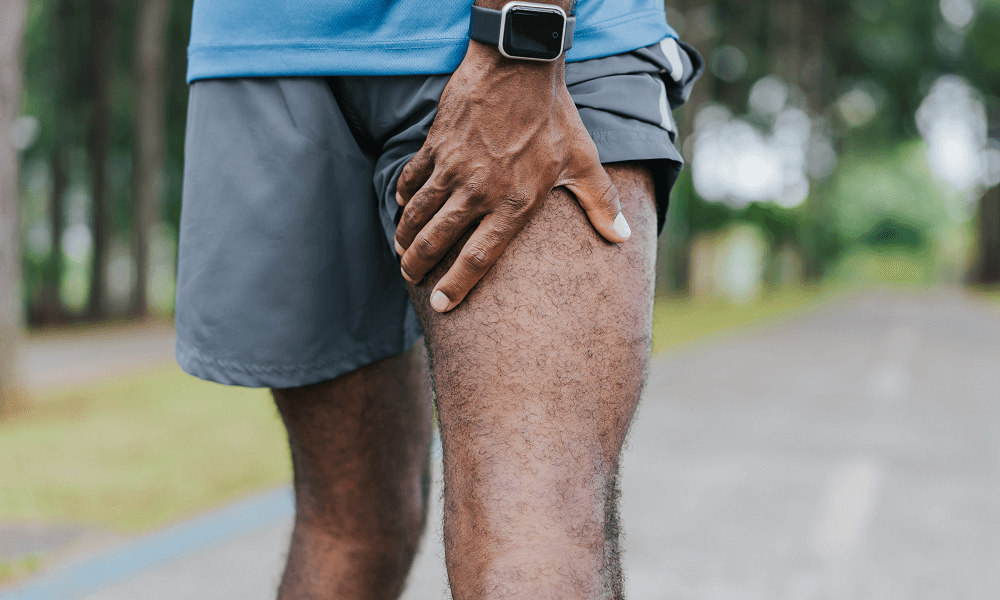Peripheral Artery Disease (PAD) affects many globally, especially those aged 50 and older. This condition arises due to the narrowing or obstruction of blood vessels in the legs and feet due to plaque accumulation. PAD can induce discomfort, cramping, and muscle weakness in the lower limbs, posing difficulties in accomplishing routine tasks.
What is Peripheral Artery Disease (PAD)?
PAD is a condition where arteries in the legs and feet become narrow or blocked, affecting blood flow. Usually, it’s because of atherosclerosis, which is the development of plaque or fatty deposits that block the arteries – making them less flexible and restricting blood flow to the legs. This reduced blood flow can lead to various symptoms, including intermittent claudication, leg pain, and cramping during physical activity which goes away during rest.
If you’re at a higher risk for peripheral vascular disease and experiencing side effects, seek a consultation with Monterey Bay Vascular. We have offices in Salinas and Aptos, CA.
Symptoms of PAD
Recognizing the symptoms of PAD is crucial for early diagnosis and effective management. The primary symptom is intermittent claudication, which refers to pain, cramping, or leg fatigue during physical activity and subsides with rest.
Other signs of the condition include slow-healing sores or wounds on the feet or legs. Additionally, individuals may experience coldness or numbness in the lower limbs. Another sign to look out for is weak or no pulses in the feet.
How to Treat PAD Symptoms in the Legs?
To manage PAD, improve your lifestyle with a healthier diet, exercise, and quit smoking. Monitor cholesterol and blood pressure. Your doctor may prescribe medication for better blood flow and recommend procedures if needed.
What to Avoid If You Have PAD?
If you have PAD, avoid habits like smoking, inactivity, and unhealthy eating. This worsens the condition. Choose a healthier lifestyle to slow its progression.
Best Exercise for Peripheral Artery Disease?
Regular exercise is essential for PAD management. Activities like walking, cycling, and swimming improve circulation and ease symptoms. Walking, in particular, is highly recommended as it activates leg muscles and promotes circulation.
Is PAD Treatable?
Yes, PAD is treatable, especially when diagnosed early. Lifestyle changes and medical guidance can effectively manage symptoms and improve quality of life. Working with a healthcare professional is crucial for a personalized treatment plan.
Does Drinking Water Help Peripheral Artery Disease?
Staying hydrated is crucial for overall health, but it may not have a direct impact on PAD. However, maintaining proper hydration can support cardiovascular health and prevent complications related to dehydration.
Good Foods for PAD?
A heart-healthy diet is essential for individuals with PAD. Foods that are rich in antioxidants, omega-3 fatty acids, and fiber can help reduce inflammation and promote good circulation. Some recommended foods include fruits, vegetables, whole grains, nuts, and fatty fish.
Duration of Peripheral Artery Disease
The duration of PAD can vary from person to person, depending on factors like lifestyle choices, treatment adherence, and overall health. With proper management and lifestyle modifications, individuals with PAD can lead fulfilling lives for many years.
Best Home Remedies for PA?
While medical treatment is essential for managing PAD, some home remedies can complement conventional therapies. These include practicing stress-reduction techniques, using compression stockings, and avoiding extreme temperatures that can affect blood flow.
Effects of Coffee on Peripheral Artery Disease
The relationship between coffee consumption and PAD is a subject of ongoing research. Moderate coffee may help the heart, but too much caffeine can harm those with PAD. Consult a healthcare pro for personalized advice.
Benefits of Oatmeal for PAD
Oatmeal is a heart-healthy food that can be beneficial for individuals with PAD. It is rich in fiber, which helps lower cholesterol levels and supports cardiovascular health. Including oatmeal in the diet can be a nutritious choice for those managing PAD.
Life Expectancy with PAD
The life expectancy of individuals with PAD depends on various factors, including the severity of the condition, overall health, and adherence to treatment plans. With proper management and lifestyle changes, many people with PAD can live a long and fulfilling life.
Treatment Options for Peripheral Artery Disease
The treatment options for PAD range from lifestyle changes and medications to medical procedures. Lifestyle changes include quitting smoking, adopting a healthy diet, and engaging in regular exercise. Medications may include antiplatelet agents, cholesterol-lowering drugs, and blood pressure medications. In more severe cases, medical procedures like angioplasty or bypass surgery may be necessary to restore blood flow.
Manageability of Artery Disease: Taking Control of Your Health
Managing PAD can be challenging, but positive lifestyle changes and medical advice can make a big difference. Work with your healthcare team, stick to your treatment plan, and improve your life by reducing symptoms.
FAQs
Can PAD be cured completely?
PAD can’t be cured but can be managed through lifestyle changes, medications, and early treatment adherence to improve the condition and prevent complications
Is PAD only common in older adults?
While PAD is more prevalent in older adults, it can affect individuals of any age, especially those with risk factors such as smoking, diabetes, and high blood pressure
Can exercise worsen PAD symptoms?
Exercise, when done correctly, can actually improve PAD symptoms by promoting better blood circulation. However, it is essential to start slowly and consult with a healthcare professional before beginning any exercise program
Peripheral Artery Disease is a serious condition that requires attention and management. By adopting a healthy lifestyle, seeking timely medical advice, and adhering to treatment plans, individuals with PAD can lead fulfilling lives. Remember, prevention and early intervention are key to maintaining optimal vascular health.
